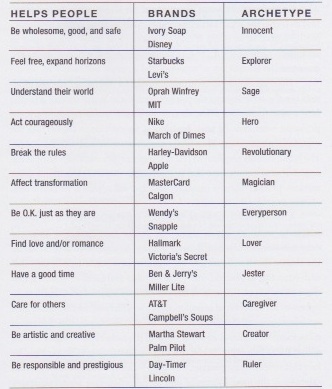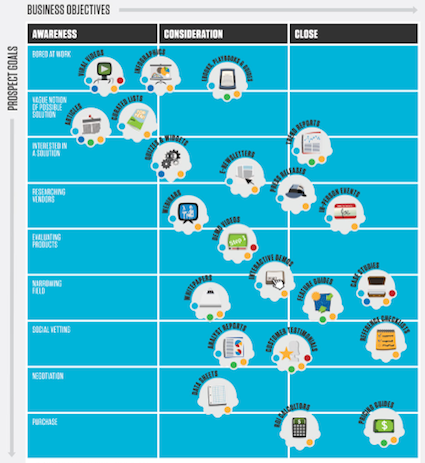The purpose of this post is to outline a few best-practice actions as related to set-up and the early months of running a Social Media Command Center (SMCC) within a major brand headquarters. Such pilot programs demonstrate the types of insights and recommendations possible through the implementation of a SMCC.
First, let’s start with some definitions:
DEFINITIONS:
Social Media Command Center (SMCC) – A centrally located space where monitors (or signage screens), PCs and desks are configured for research of social data (and other data as prescribed) by in-house employees and 3rd party vendors. The SMCC provides a way to visualize data in various configurations relative to the needs of the corporation. The focus of research at a SMCC is social data.
The phrase “command center” has become common due to the central data research function relative to a brand’s outlets or regional offices. Insights and recommendations relative to past events, current initiatives and/or future opportunities are distributed from the command center.
A SMCC can be used for actions by various silos (upon approval). Such actions can include Marketing Campaign planning & engagement, PR response, HR discovery, Sales prospecting, Customer Service, Call Center integration, Competitive Intelligence, Customer Intelligence, company overview for the C-Suite and much more.
A fully realized SMCC is more than just a research center. The SMCC can be populated by representatives from each silo/department. The representatives can be authorized to take immediate action on critical issues. Policies can be put into place that give these representatives acceptable parameters for action and response.
For example, Customer Service representatives present within the early-stage SMCC can demonstrate an enhanced response time to resolving customer needs. Other names for a SMCC include Social Listening Center, Listening Center, Social Analytics Research Facility, Web Intelligence Center and Data Research Facility.
Social Data – Data specifically derived from the Internet and social networks, such as Facebook, LinkedIn, Twitter, YouTube, Google+, Pinterest, Slideshare, Instagram, blogs, online forums, websites, and other online communities/networks. The data is public information, meaning it can be accessed by anyone.
VALUE:
The value of a SMCC to a brand or corporation includes:
– provides the possibility to view all mentions of the brand online
– provides the possibility to view all mentions of competitors online
– provides the possibility to discover key influencers as related to the brand, market space and competitors
– provides the possibility to monitor actions by competitors online
– provides customer insights based on conversations online
– provides recommendations for action to be taken in multiple silos at the brand/corporation
– provides recommendations for research projects related to customers, competitors and corporate initiatives
SAMPLE RESEARCH PROJECT SUMMARIES:
The following sample projects demonstrate just a few types of research possible through the use of a SMCC.
Brand Audit – An overview of mentions and sentiment related to the brand. An overview related to brand initiatives using specific search terms. A comprehensive audit of where the brand is being mentioned and by whom. Discovery of key influencers driving opinion about the brand, the maret segment and competitors. A study of competitors’ to the brand and a comparison of mention volume, sentiment and other factors.
Product Launches – As specific new product lines are launched, the SMCC staff can provide key internal decision makers with valuable insights based on mentions.
Marketing Planning Projects – Planning as related to marketing can be enhanced through the use of a SMCC. Specific marketing projects can be created as a result of listening to customer and competitor conversations and noting trending topics. Creatives from the brand & third-party agencies can collaborate in a SMCC while viewing visualizations of mentions and complex query results.
Example: Monitor conversations during brand campaign launches and create on-the-fly sub-marketing campaigns for specific regions/cities based upon mentions. Discover influential voices online (individuals and/or specific sites) that are either detracting or celebrating the brand.
Sales Prospecting Projects – Sales directors can discover prospects for sales teams, along with detailed on these prospects. A SMCC can be used by sales strategists to created finely segmented lists of prospects. The SMCC can also be used to gather and append valuable contact and demographic data to each individual prospect.
Example: Monitor specific regions and deliver B2B prospect lists to enterprise sales staff in those regions. This is based on conversations in those regions by ideal B2B prospects. Deliverable includes a list of B2B prospects in a region with appended contact/social data and intelligence on each prospect (why this is a good prospect for brand business services in that region, along with suggested ways to gain advantage with specific example). The ultimate goal with this project is to demonstrate the efficacy of social data in helping sales leaders close deals for brand Business Services.
Human Resources Discovery – Human Resources can quickly discover ideal candidates for positions within the corporation. Insights on employee sentiment within the brand can be delivered to HR from SMCC analysts. Insights on sentiment of employees at competitors can be delivered to HR also with the SMCC program.
Example: Identify lists of ideal prospects for specific positions at brand and/or brand franchises. Demonstrate how social data can yield ideal prospects for HR purposes. Monitor employee sentiment related to specific initiatives, discover ratings by ex-employees or current staff at sites like Glassdoor.com and LinkedIn.com. Monitor employee sentiment at competitors and discover opportunity for recruitment/head hunting/competitive intelligence. Monitor partners and vendors. Discover core differences between existing partners/vendors and their competitors.
PR Response – Analysts at the SMCC can provide valuable and quick insight into mentions of the brand online. Response times to positive or negative mentions online can be greatly reduced by having one central research hub. In addition, the ability to quickly visualize threats/opportunities, along with ability to append valuable conversation and contact data, will greatly enhance critical PR efficiency. Monitor “watchdog” reports related to specific products at brand.
Example: Monitor specific regions and/or franchisee locations for mentions and sentiment. Develop insights for these regions/franchisees on what customers/local inhabitants are saying about those store locations. Monitor global sentiment relative to competitors – what PR issues are our competitors dealing with. Discover specific threats to the brand. Discover specific social proof (positive trends & mentions) related to the brand.
Customer Service – Customer Service is perhaps the most valuable action within the SMCC. The ability to aggregate/analyze customer sentiment as demonstrated in online conversation and respond quickly to the needs of one’s customers is greatly enhanced in the context of the SMCC. Again, a fully realized SMCC is more than just a research center. The SMCC can be populated by representatives from each silo/department. The representatives can be authorized to take immediate action on critical issues. Policies can be put into place that give these representatives acceptable parameters for action and response. The Customer Service representatives present within the early-stage SMCC can demonstrate an enhanced response time to resolving customer needs.
Example: Monitor specific regions and/or locations for mentions and sentiment. Develop insights for these regions/franchisees on what customers/local inhabitants are saying about those store locations. Monitor mentions related to specific brand products and competitors’ products. Discover venues for providing swifter service, product complaints and other online arenas where brand brand word of mouth is spreading. Recommend specific programs or amendments to existing programs at the brand.
Competitive Intelligence – The SMCC can provide insights related to activities by competitors online, and also to the customers, vendors and employees of these competitors. As a sub-set of this research, we can monitor partners and vendors.




